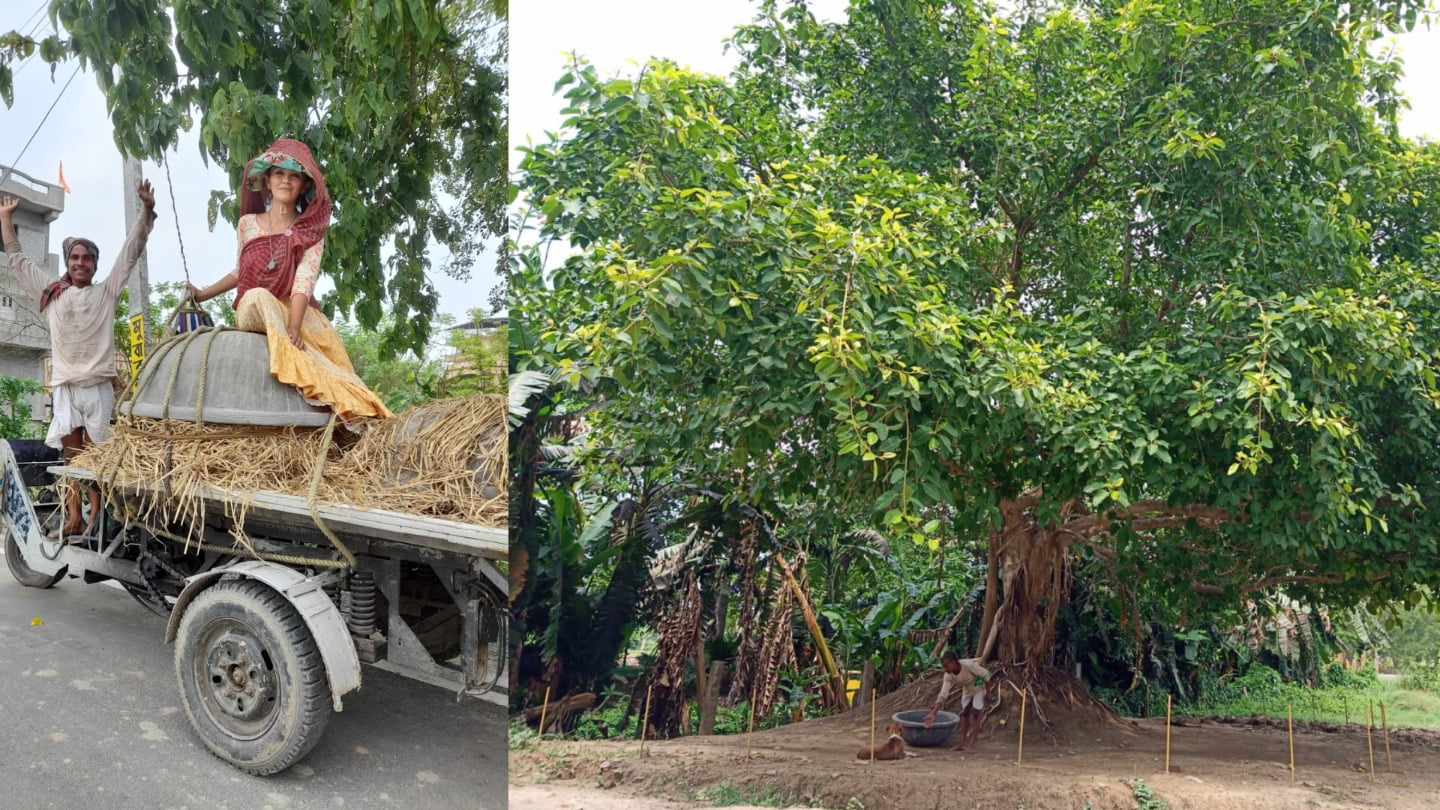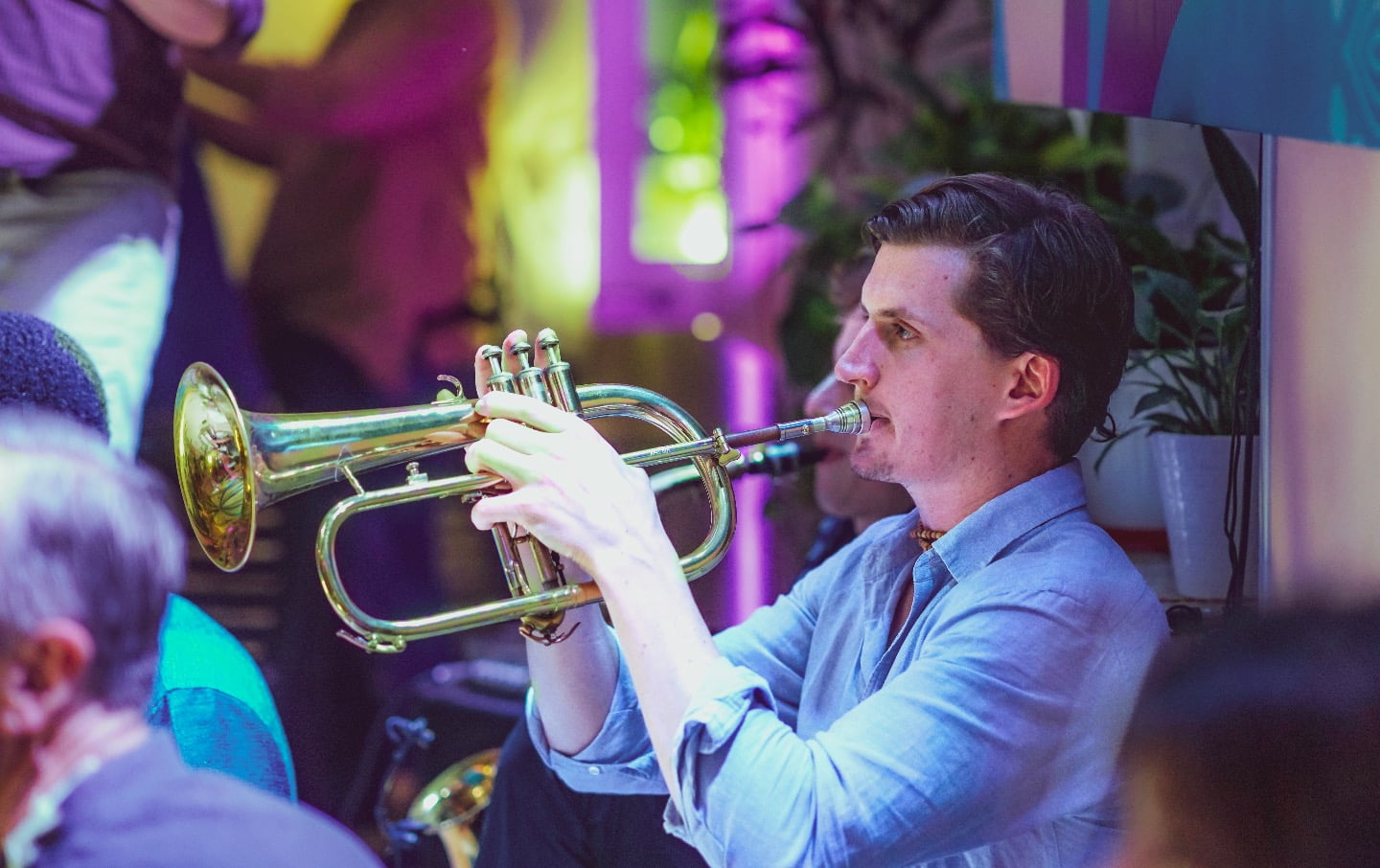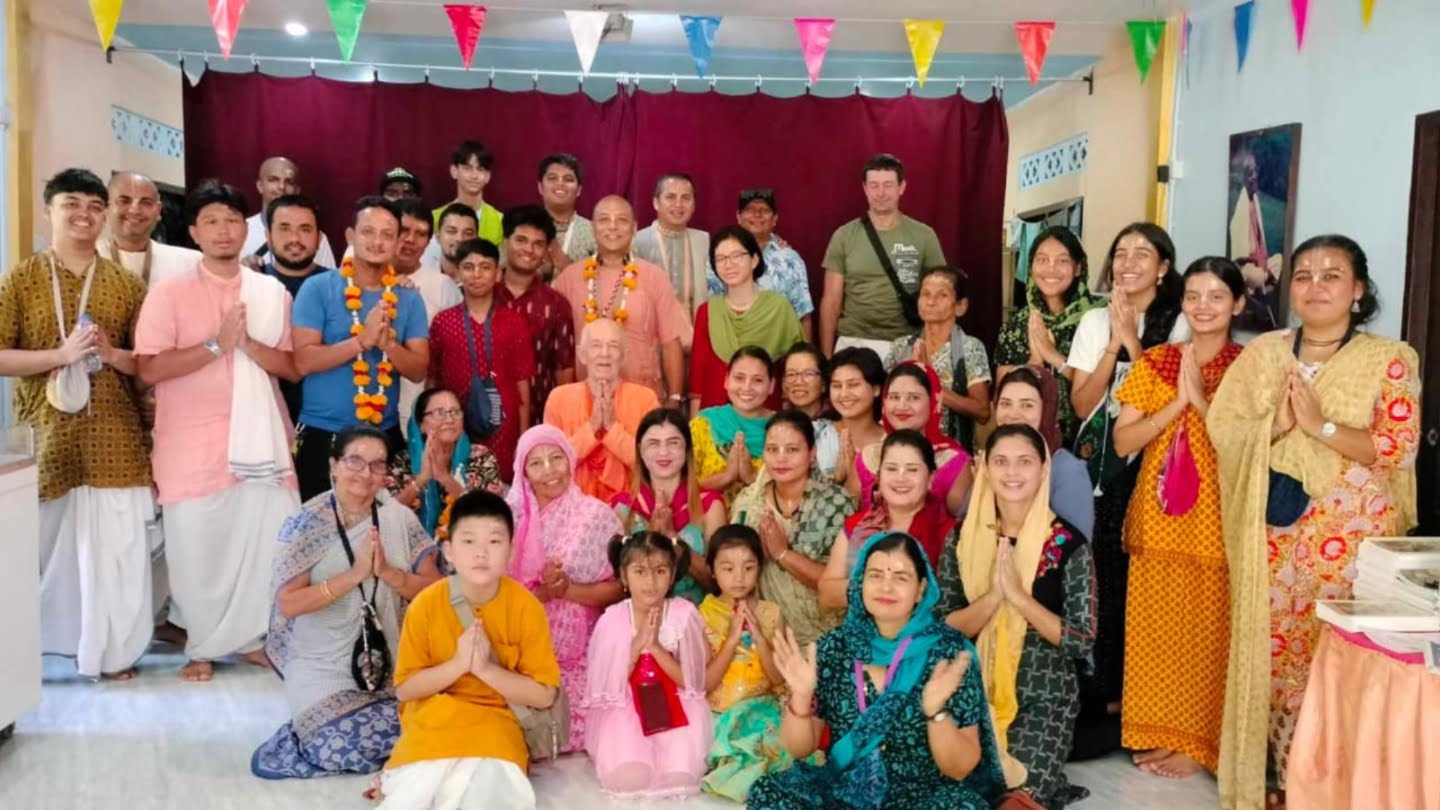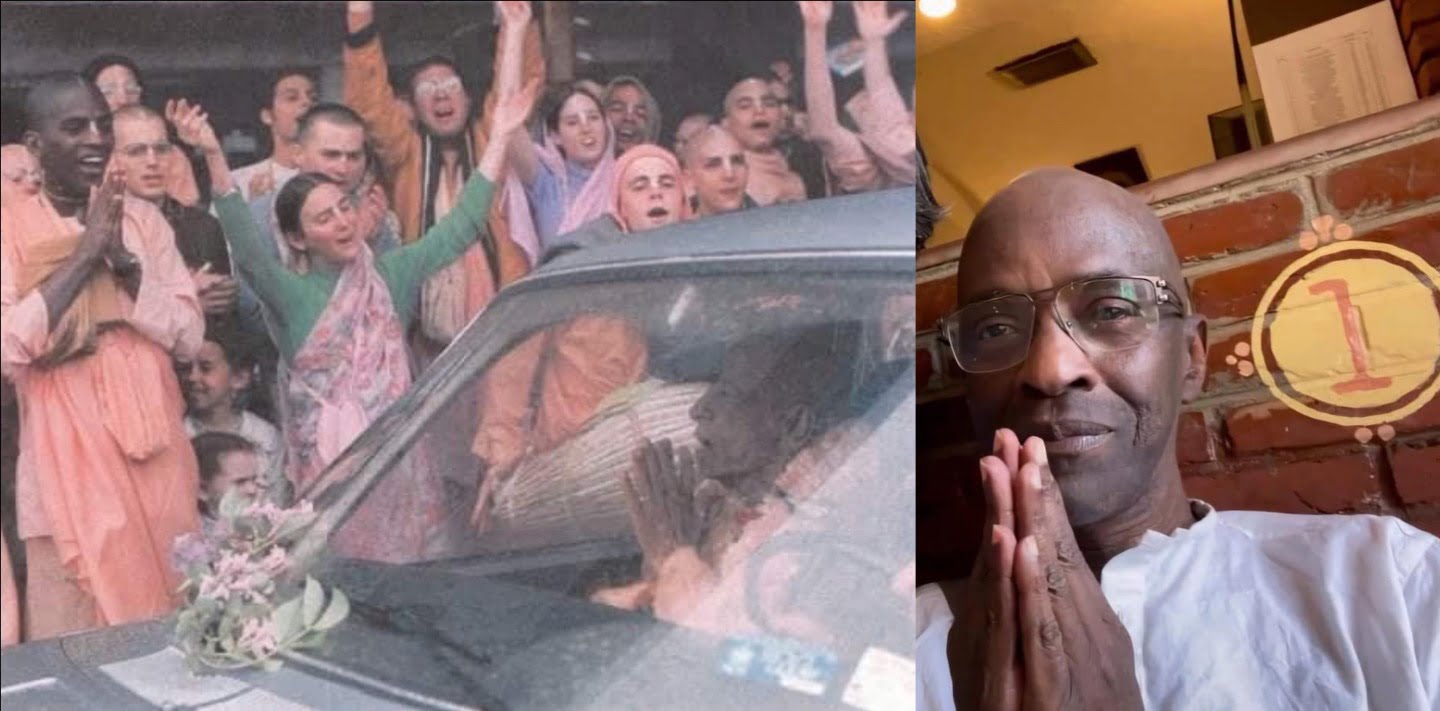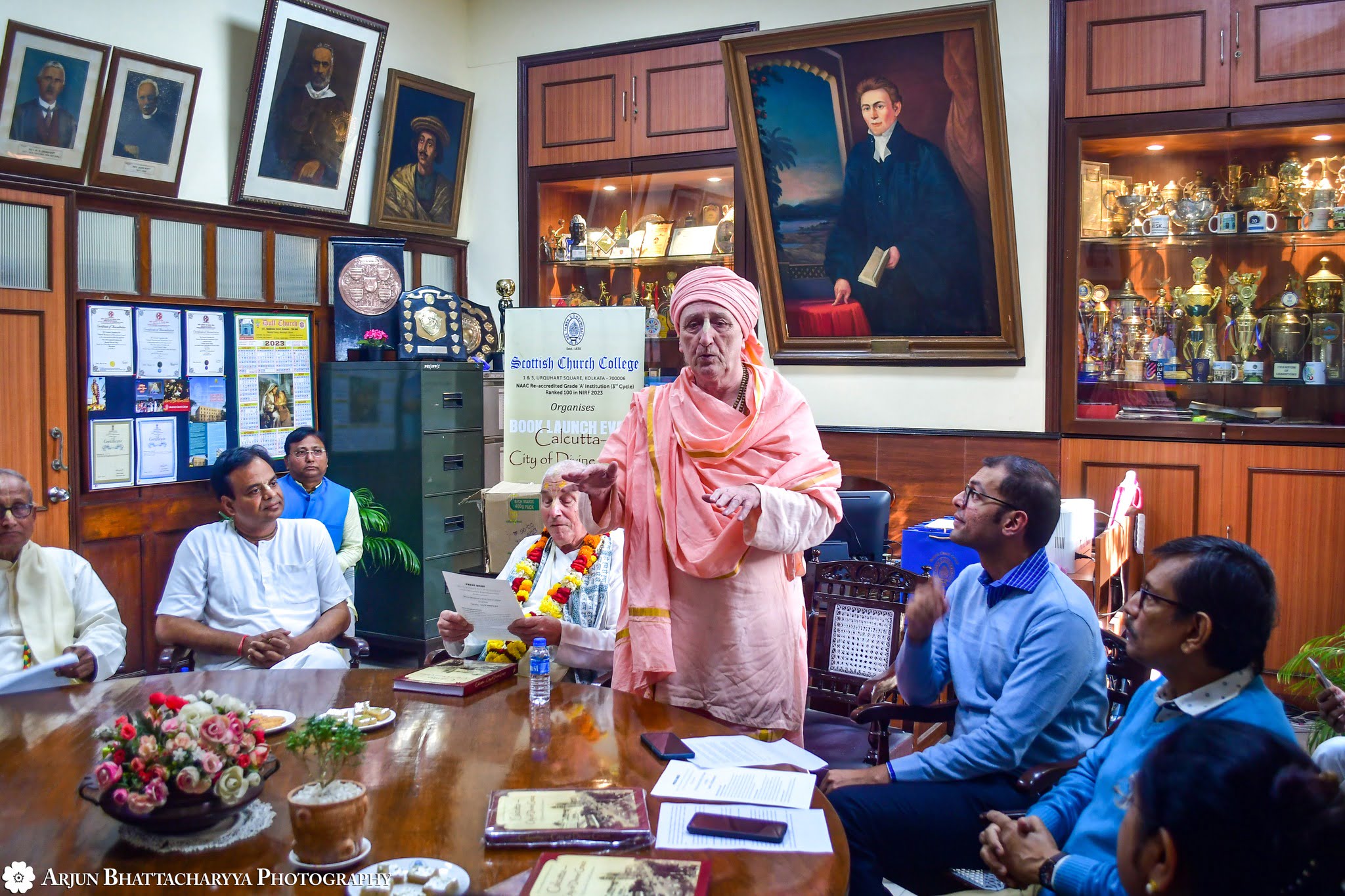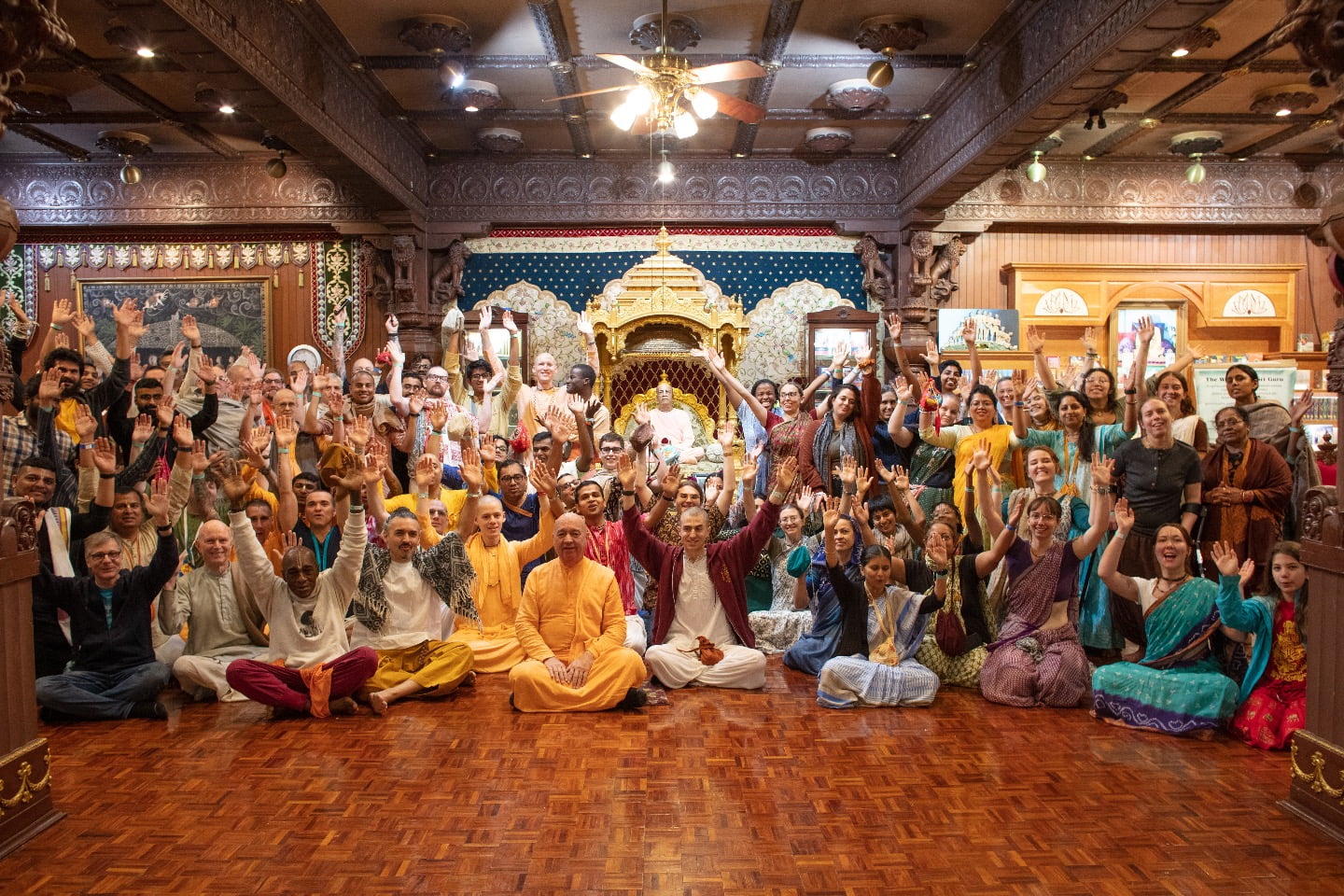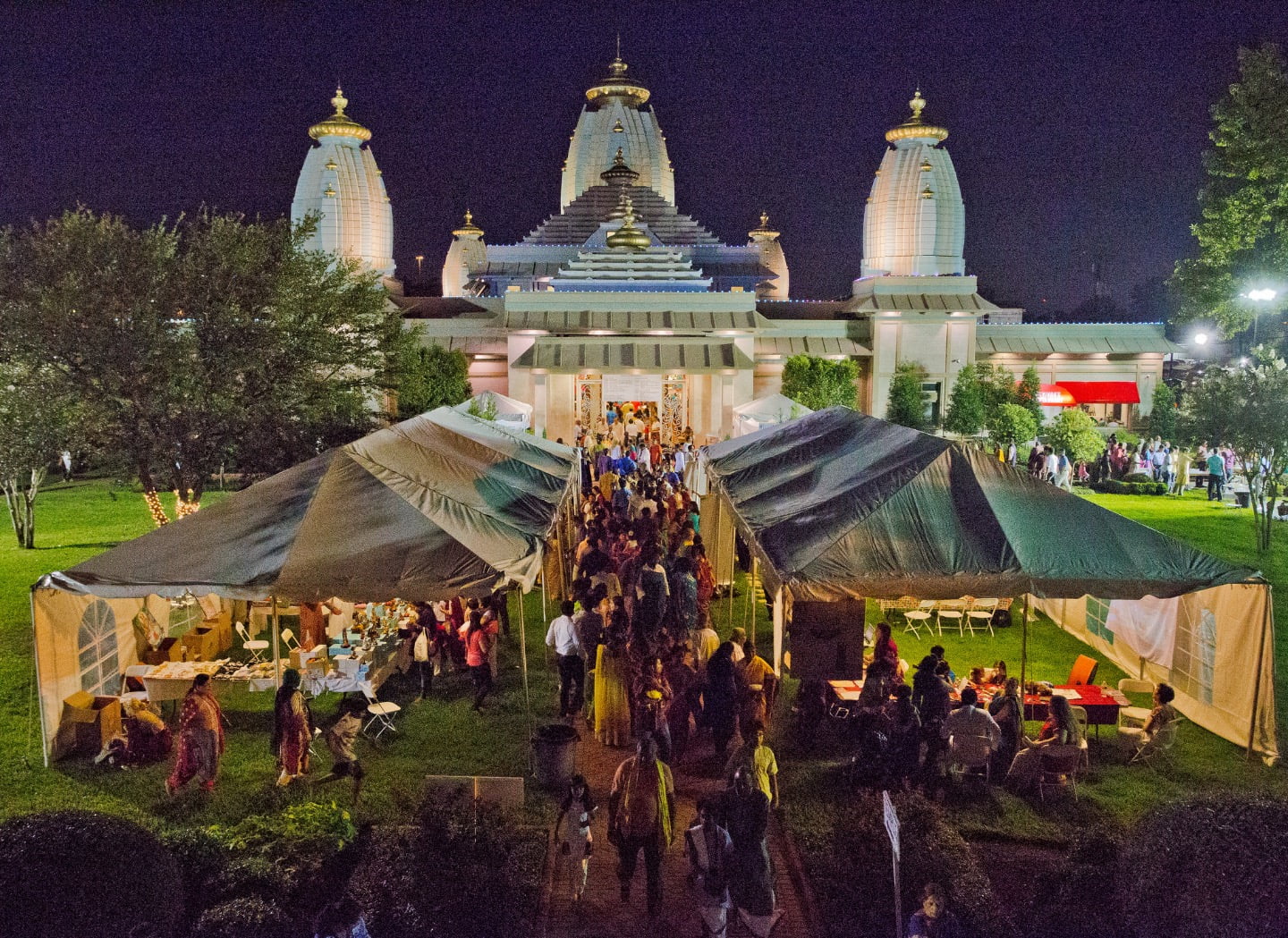Miss Fashioned
By Ravindra Svarupa Dasa | Mar 02, 2016

Not everyone sees with as careful an eye as Kennedy Fraser, the fashion writer for The New Yorker, whom I quoted in last week’s posting. She extolled the costume of the Krishna devotees, “whose apricot robes come into their own when they are not swathed in mufflers.” The notable word here is “apricot,” remarkable for its precision. It’s the exact color we wore in 1971:
APRICOT
We devotees conventionally called it “saffron,” but this is saffron:
SAFFRON
To this day you rarely see it in ISKCON, even in its lighter version:
Sometimes, in an effort to be more realistic, we used to call our robes “peach” or “orange”:
PEACH
ORANGE
But our robes were neither of these colors. “Apricot” is the exactly right word.
Among the various misrepresentation of Krishna couture, I am most intrigued by the photograph that graces the cover of The Strange World of the Hare Krishnas, by Faye Levine. In researching her work, Ms. Levine lived in the New York temple—then located in a former Sisters of Charity nursing home on Henry Street in Brooklyn—during the month of December, 1972. A dedicated researcher, Ms. Levine followed the temple schedule, chanted japa with the devotees every morning, went out regularly on sankīrtana, and received confidences from a number of female devotees. To the envy of some of her fellow ashram residents, she was granted a lot of personal time by the sannyāsi temple president, with whom, she confesses, she eventually fell in love. Her narrative saw light as a straight-to-paperback publication by Fawcett Publications in March, 1974, when I picked it up for ninety-five cents off a Philadelphia drugstore bookrack.
Here is its cover:
I recognized right way, from the building looming over the trees, that the photograph was taken in Central Park: a shot of a sankīrtana party in the Park on a fall day. I noticed that the woman was not wearing a sari; instead an Indian-print bedspread was gracelessly draped around her. Nor did a pair of proper karatālas appear in her hands; a strand of gift-shop brass bells dangled instead. The fingers of the brahmacārī on the left rested on a drumhead, but it was not a mṛdaṅga. The other shaven-headed brahmacārī has no śikhā. The outer cloth on both was clumsily tied. But the real clincher was the tilaka mark on the forehead of the drummer—a wide V with arms diverging from the bridge of the nose over the crown of the head.
The photo was a fake. Staged with paid models by someone who had never looked closely at devotees, it tried to visually reproduce a standard verbal description: “You see them chanting outdoors, the women wrapped in saris with their heads covered, the men with shaven heads in pink robes. They ring bells and beat drums and paint a ‘V’ of clay on their foreheads. . . .”
The cover was clearly the job of the publisher. On her own part, Ms. Levine had become a keen appreciator of devotee apparel, both female and male:
According to the devotees the saris and dhotis are “spiritual garments,” appropriate for spiritual advancement. From my own experience I would say that when a woman puts on her first sari she gets a rush of understanding: so this is how the female form is supposed to be clothed! The diagonal drapery is quite interesting, very different from tighter-fitting western dress, which is monotonously organized along horizontal and vertical axes. . . . Though women in India make the sari sexy by wearing a great variety of colors and patterns, drawing it tightly across the hips, and showing a lot of skin, the Hare Krishna women handle the same garment puritanically. With long shirts and sweaters underneath, they never expose their midriffs, arms, necks, or hair—an extreme of dress style not seen in modern India.
Hare Krishna men in their natural habitat at the temple, on the other hand, usually do look sexy. Their flowing dhoti has a classical air. Often they are barefoot and barechested. Long expanses of leg can be seen when they walk, This virile effect is undermined by the overcoats, muffler, boots, and sneakers they wear to preach in the winter city.
But in midsummer, temple feasts go outdoors, and in public chanting parties need not encumber themselves with the paraphernalia of keeping warm. Then the devotees become a flower-like panorama, a gentle rainbow in white, pink, yellow, saffron. Their simple robes actually enhance their individuality. Cotton cloth floats in the sun and wind, fabric curves gracefully over the human form, and one is reminded of the lost purity of the ancient civilization.
There’s a nice concordance here between this appreciation and that of Kennedy Fraser, although it must be admitted that Ms. Fraser’s judgment seems to be the more disinterestedly aesthetic one.
Speaking of agreement, Faye Levine has recorded in her Fawcett paperback an appreciation of Prabhupada’s early English writing similar to my own (November 25). Ms. Levine proffers an endearing comparison—one that never occurred to me. She writes:
In the first edition of his Bhagavatam, printed in India, there were many typographical errors. Yet an immense power shone through. The tone was as magical as, and occasionally reminiscent of, the tone of the young modern poet Bob Dylan.
Compare:
Please therefore, go away immediately towards the northern side without any knowledge of your relatives because in the near future after this the time is approaching which will diminish man’s good qualities . . .
You must leave now/Take what you need,/You think it will last/But whatever you wish to keep,/You better grab it fast. Yonder stands your orphan,/With his gun Crying like a fire in the sun./Look out the Saints are comin’ through/And IT’S ALL OVER NOW, BABY BLUE.
No such appreciations mitigate the erroneous representation of the garb of a Hare Krishna devotee in George Romero’s 1978 horror classic Dawn of the Dead. Artistic license may be granted for the presentation of a devotee as a zombie—what offense could yield that fate?—but there is no excuse for the egregious errors in costume.
These can be studied most conveniently by examining the seven-inch action figure offered by Cult Classics Series 6: “Hare Krishna Zombie—Features Supply Boxes, Tambourine and Diorama Base. ” It is available from amazon.com.
I have this artifact before me as I write. The back of the packaging helpfully states:
Left to wander the hallways and stockrooms of the mall, the Hare Krishna Zombie almost makes Francine one of his victims. She narrowly escapes his grasp, leaving the Krishna Zombie clutching his tambourine and fumbling amongst the cardboard boxes.
You can get an idea from these:
As a devotee, I hope that ISKCON Communications will note these errors and see to it that all future Hare Krishna zombies are properly represented.
Of course, as an Iskconologist I am quite satisfied to immerse myself into the rich semiotics of misrepresentation presented by this artifact. There’s a whole doctoral dissertation in this seven inch figure—several, actually—and this is but a little part of a large and rich field of study, already being explored by intrepid pioneers.
Let me offer a final image for your meditation in Iskconology:















